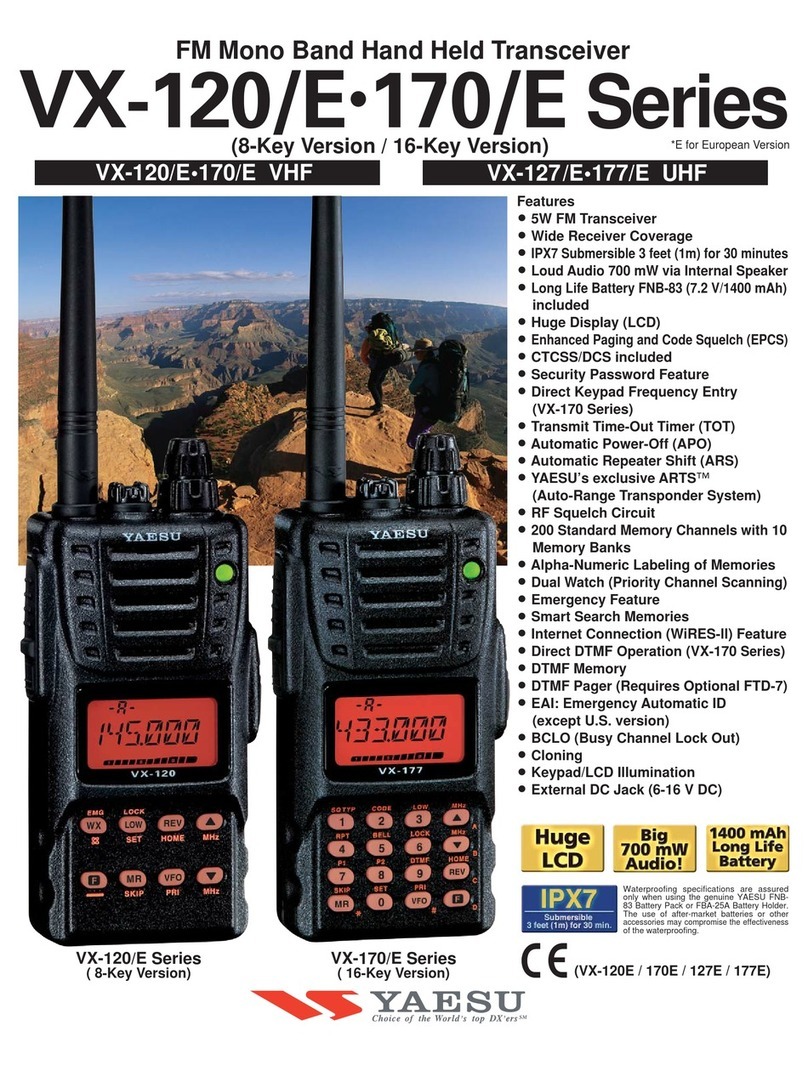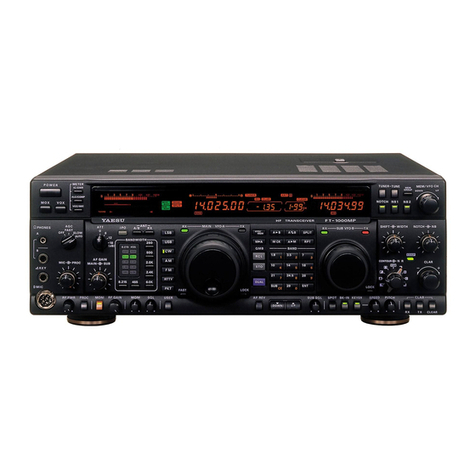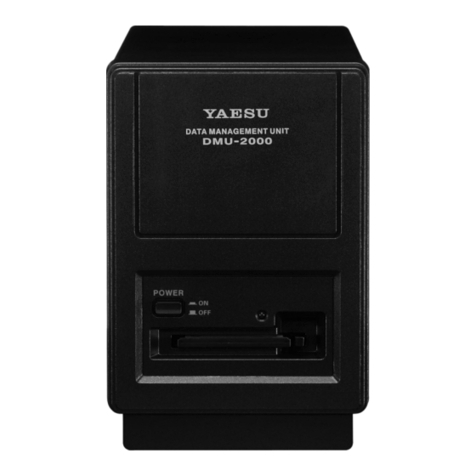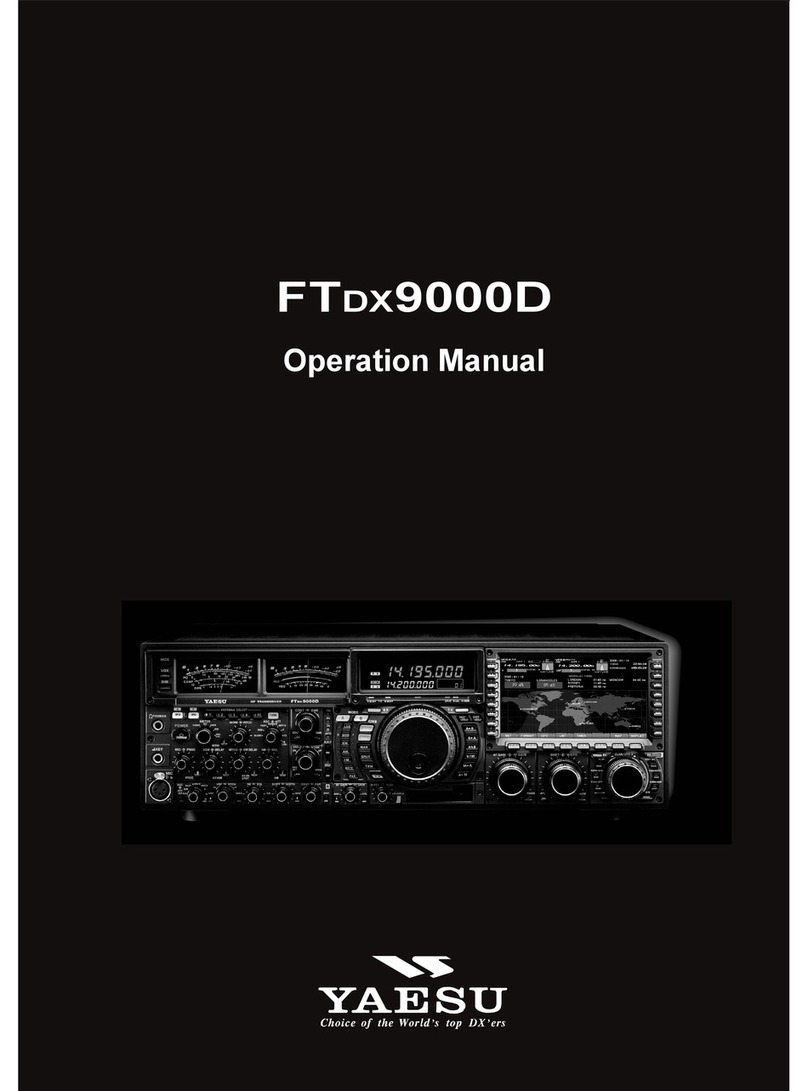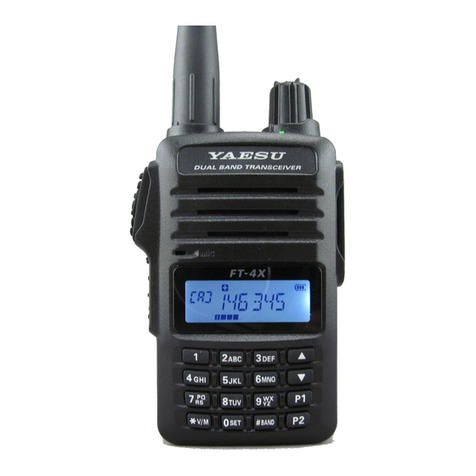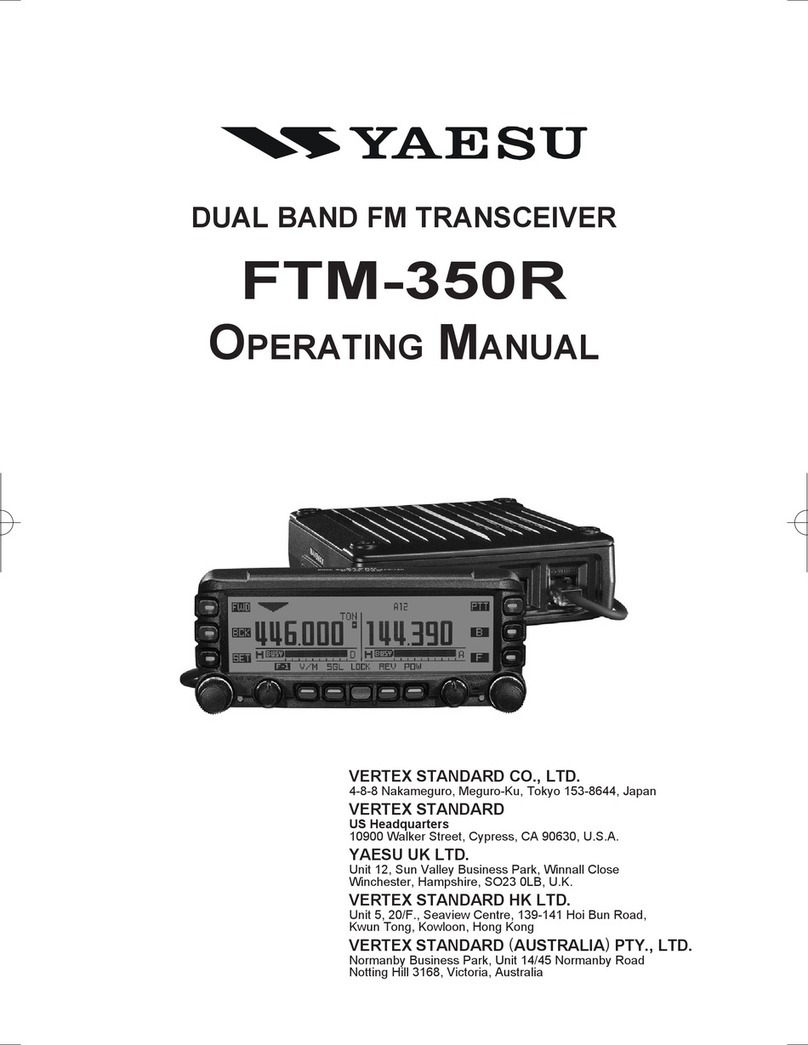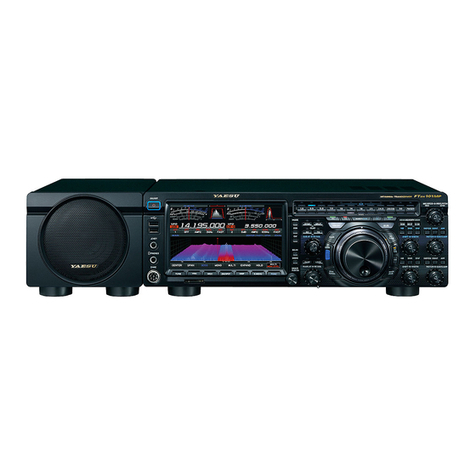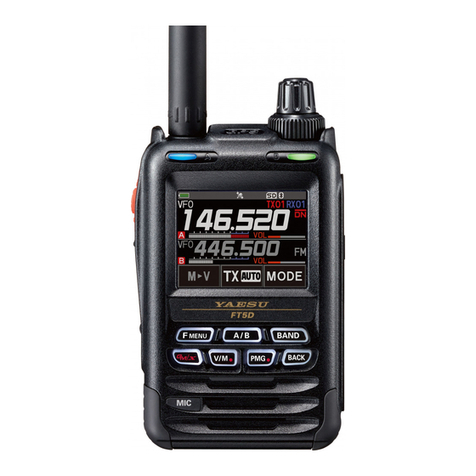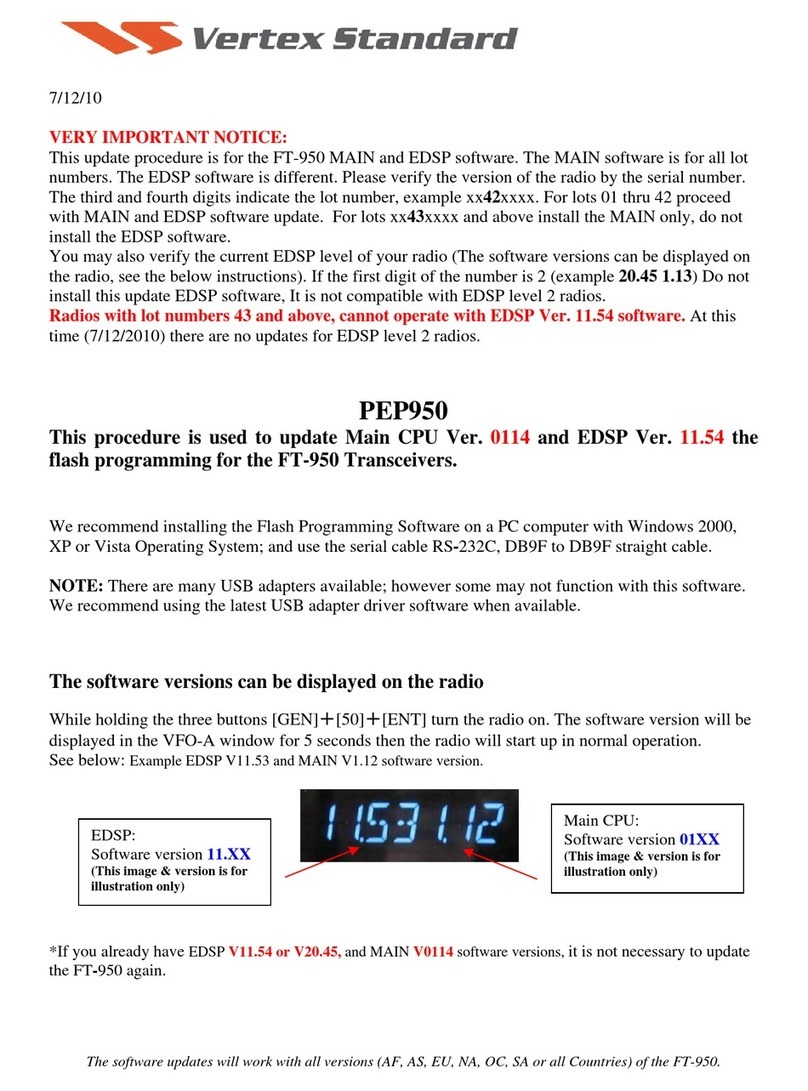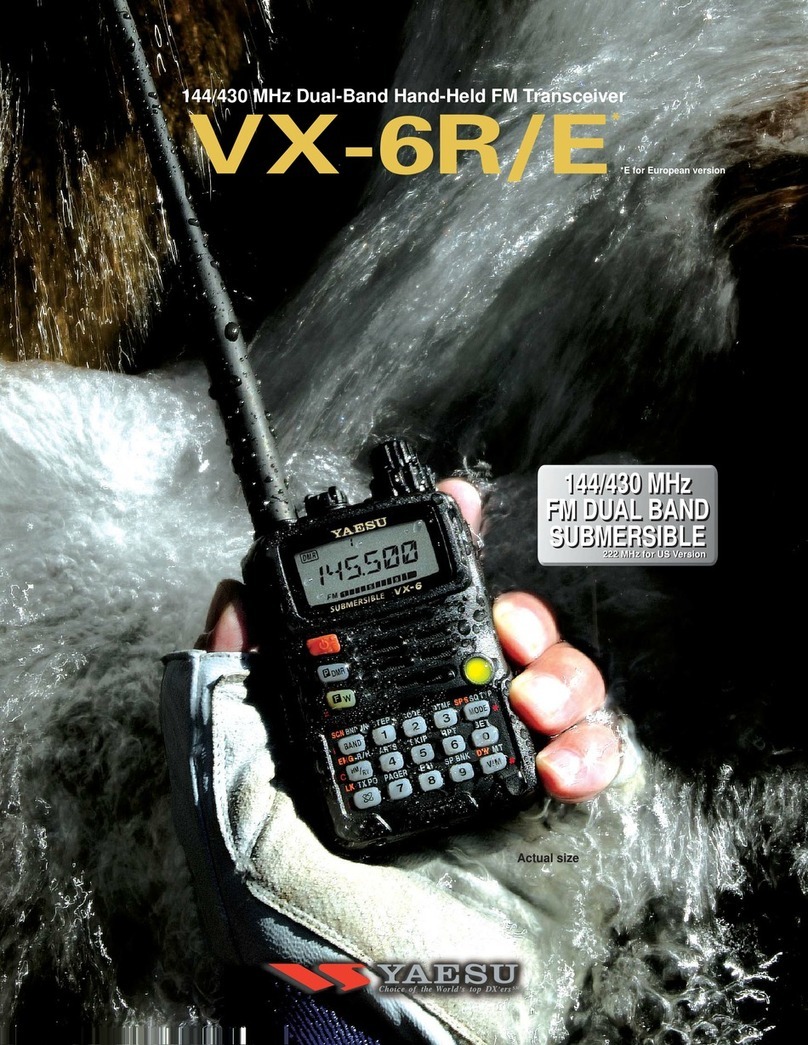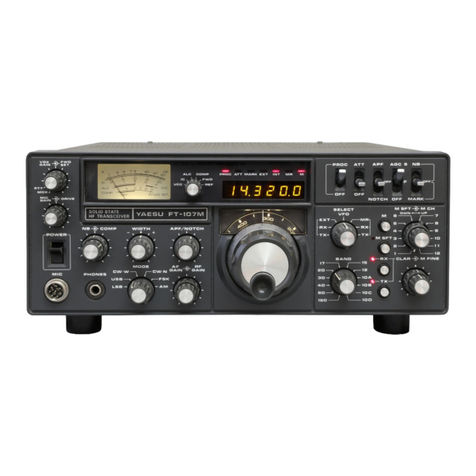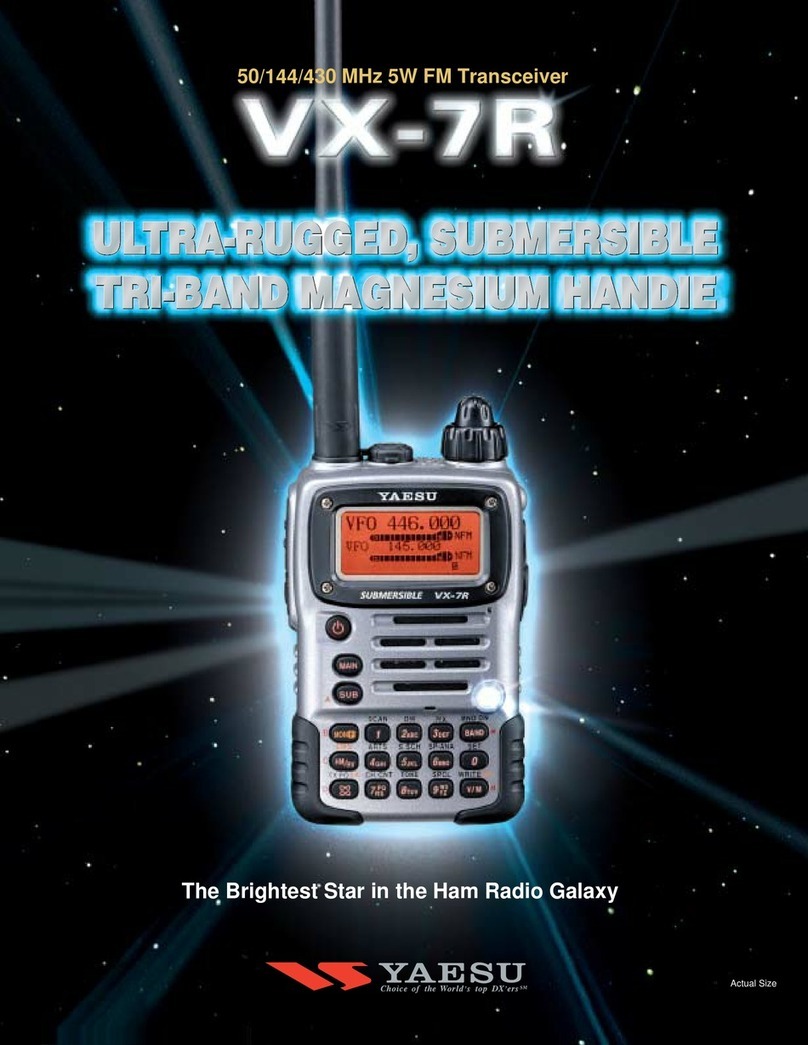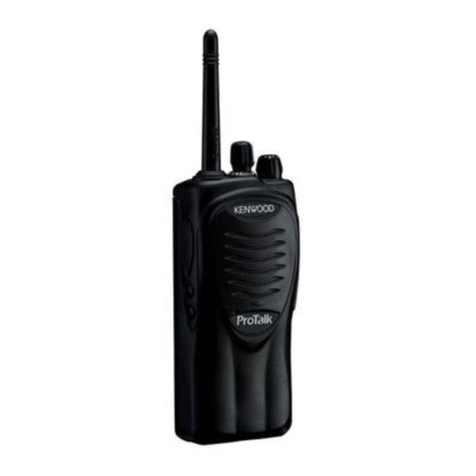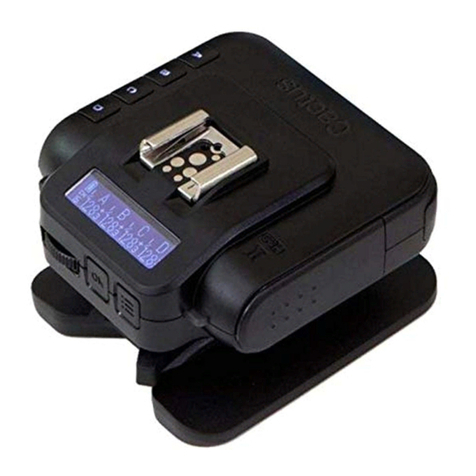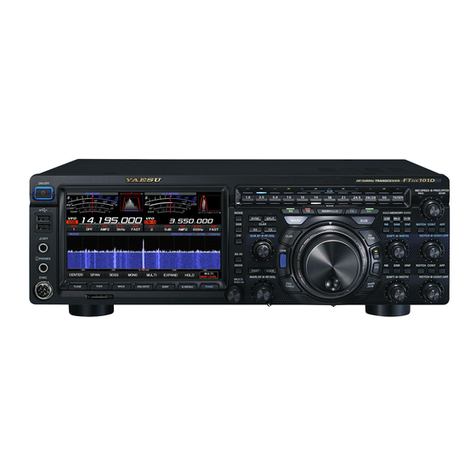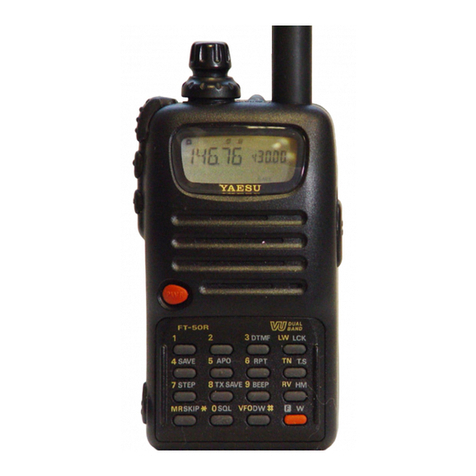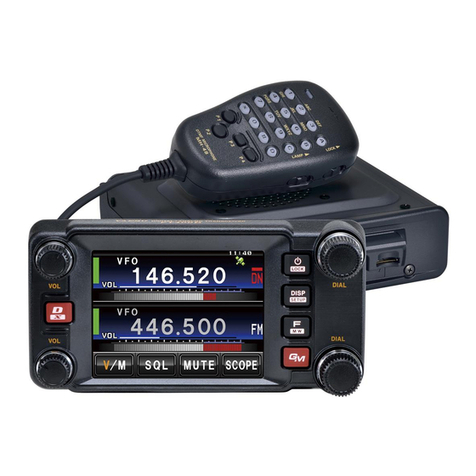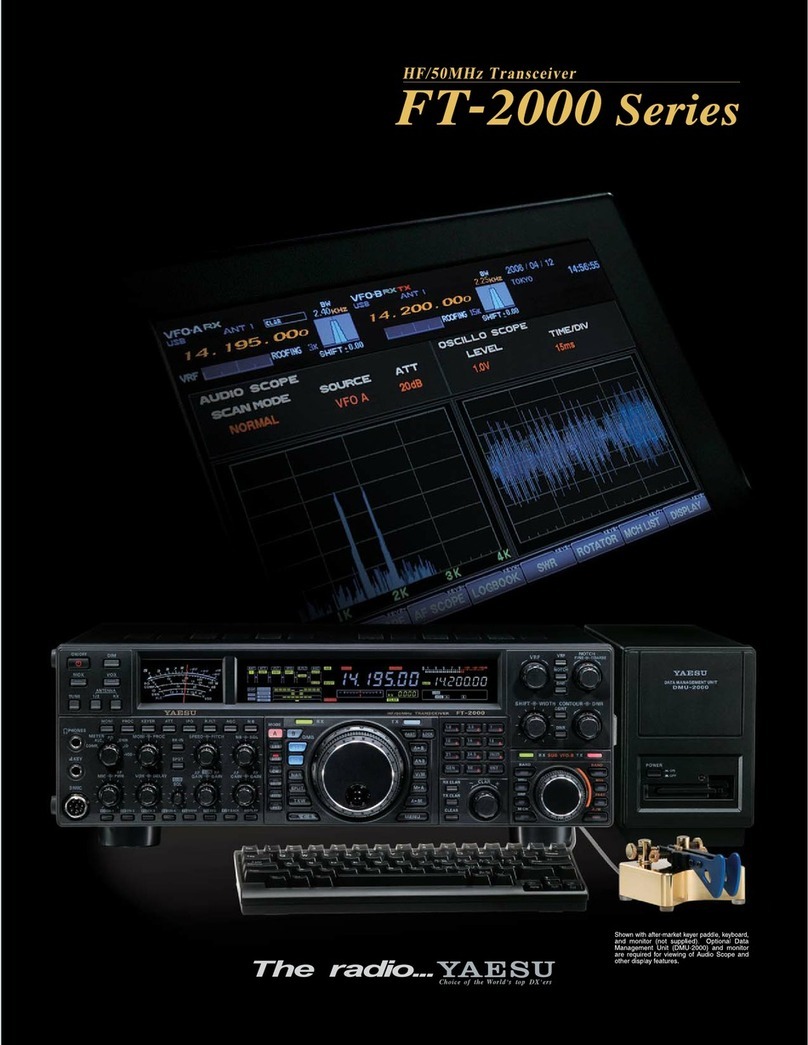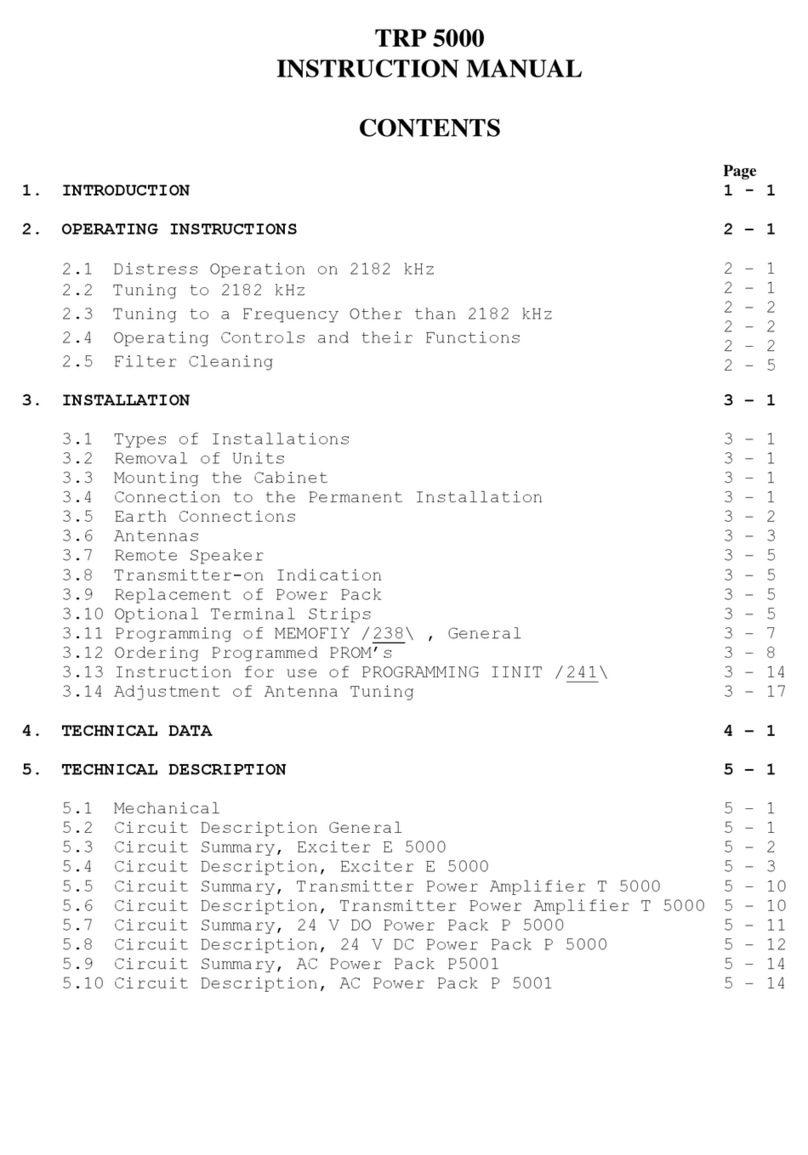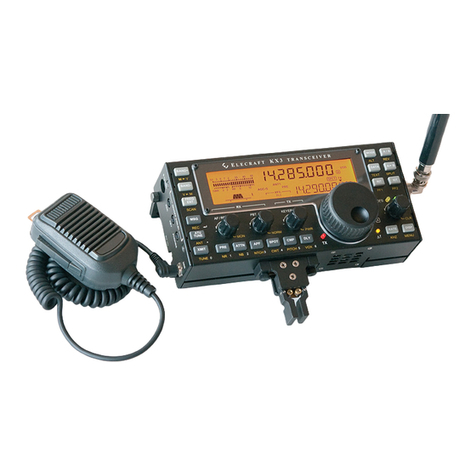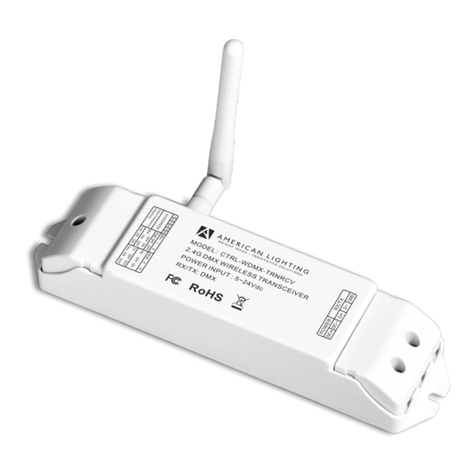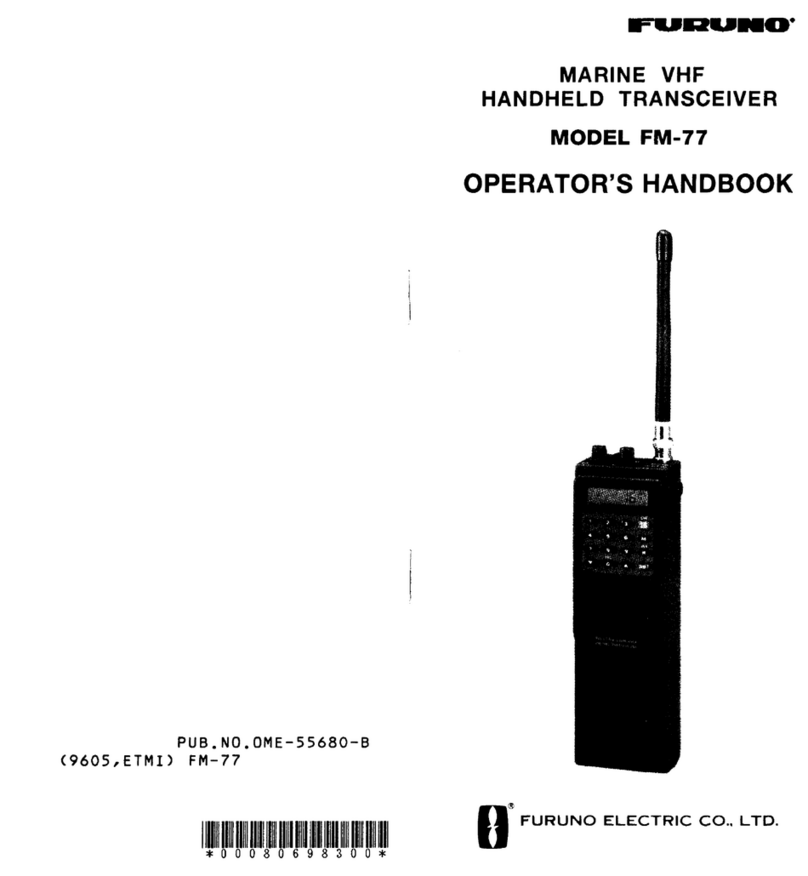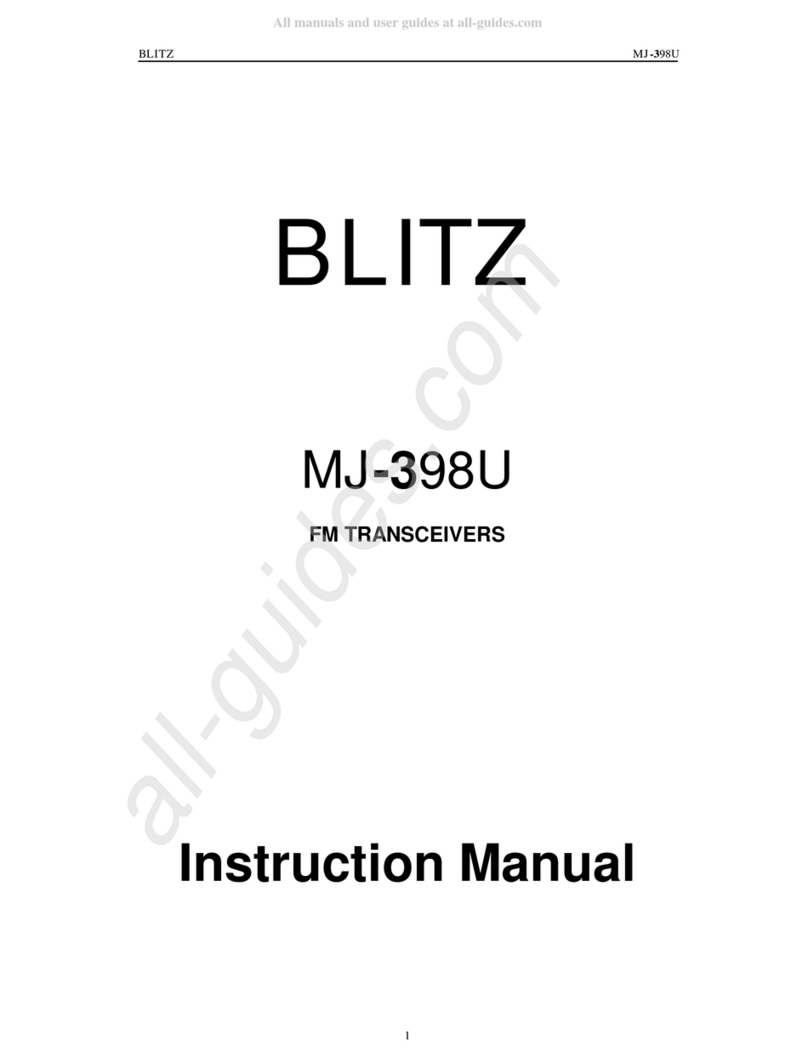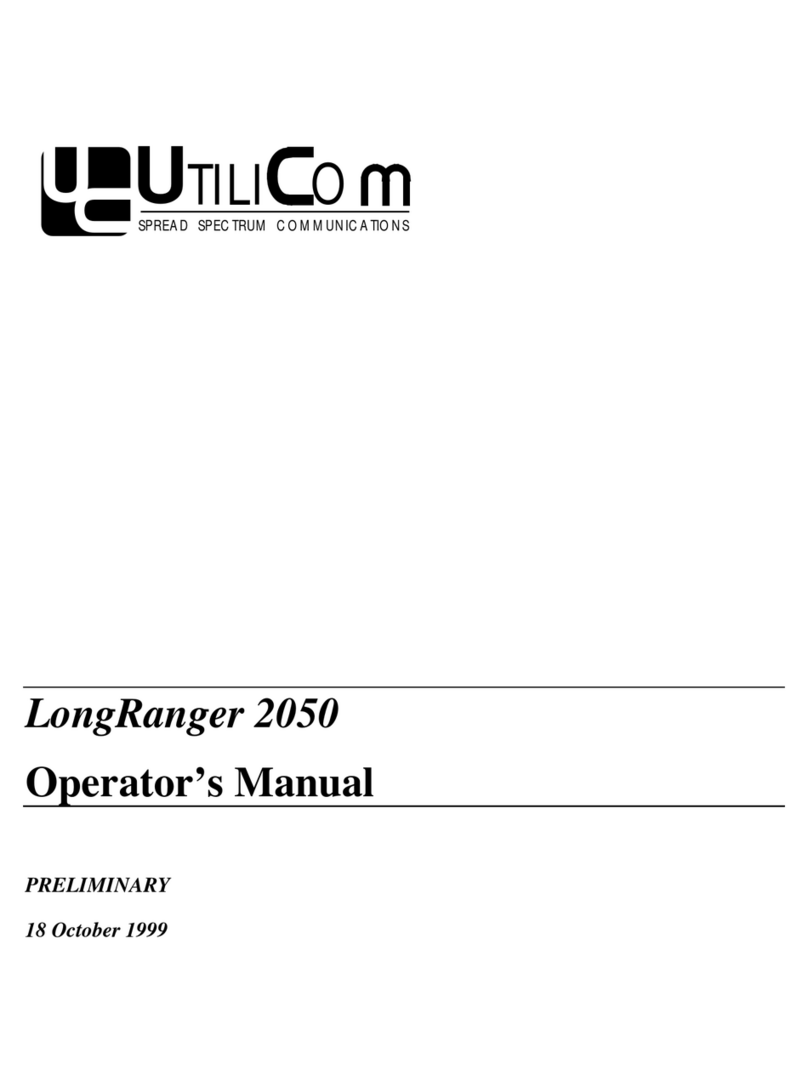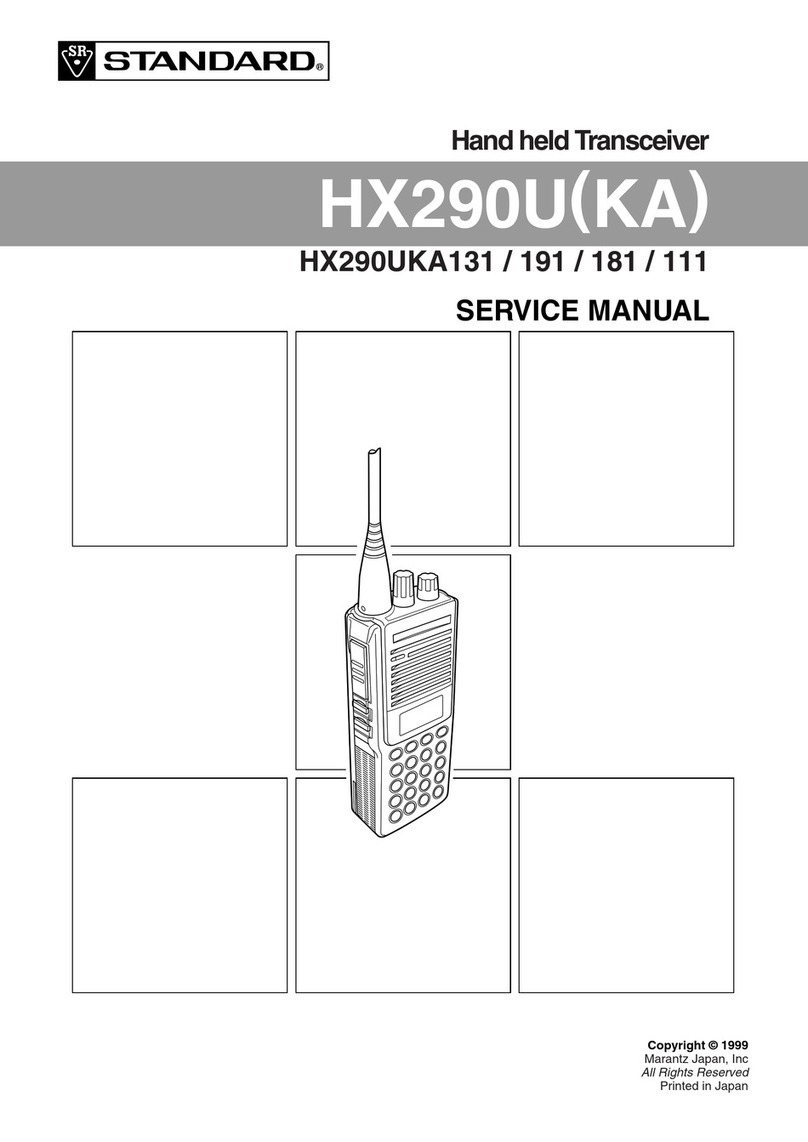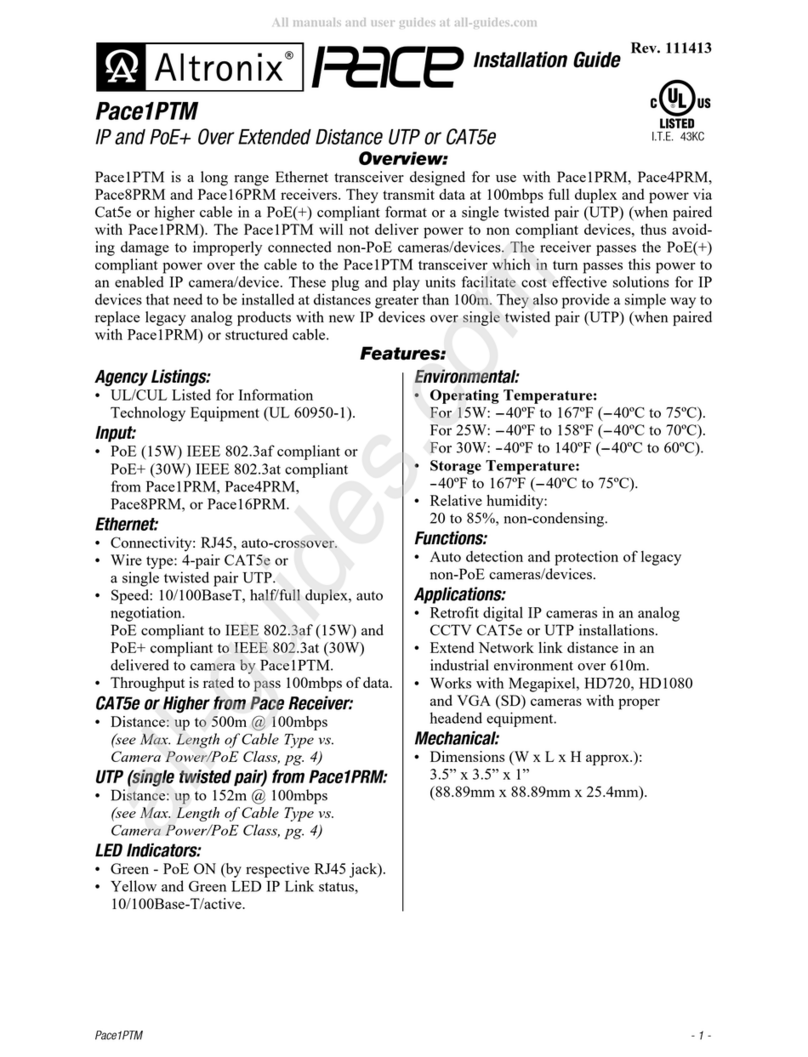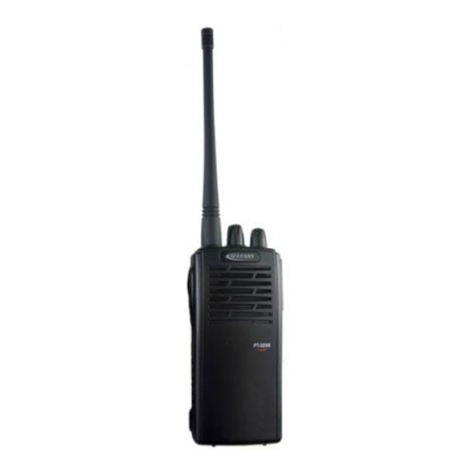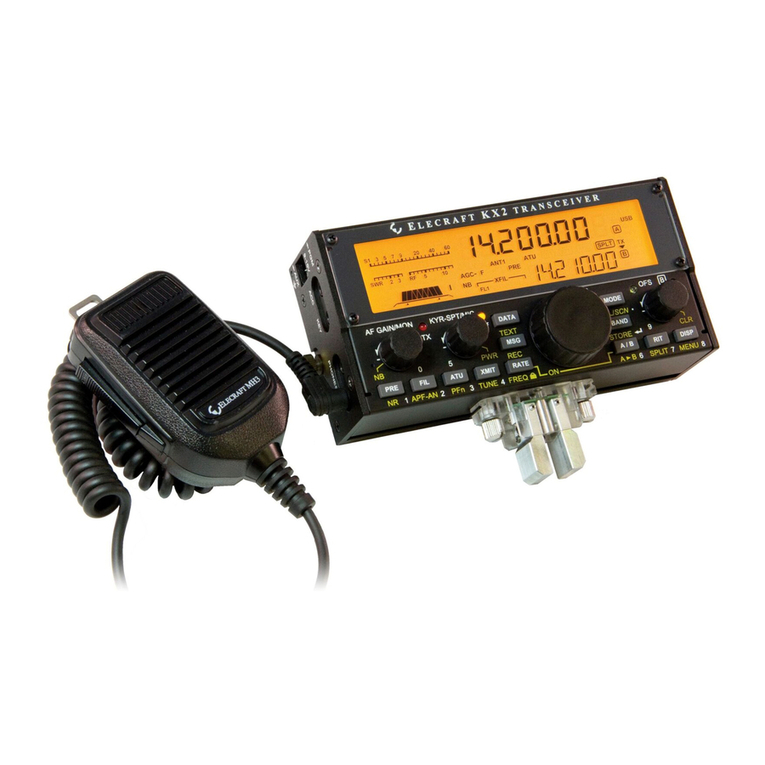
Contents
Introduction ...................................................... 1
Specifications .................................................... 2
Accessories & Options ..................................... 3
Supplied Accessories ..................................... 3
Optional Accessories ...................................... 3
Installation ........................................................ 4
Preliminary Inspection ................................... 4
Installation Tips .............................................. 4
Safety Information ......................................... 5
Antenna Considerations ................................. 6
Mobile Installation ......................................... 7
Mobile Power Connections ........................ 8
Mobile Speakers ........................................ 8
Base Station Installation ................................ 9
AC Power Supplies .................................... 9
Front Panel Controls & Switches ................. 10
Microphone Switches ..................................... 12
Rear Panel Connectors .................................. 13
Basic Operation .............................................. 14
Turning the Transceiver On and Off ........... 14
Adjusting the Audio Volume Level ............. 14
Adjusting the Squelch Setting ..................... 14
Frequency Navigation .................................. 15
1)Tuning Dial ......................................... 15
2)Direct Keypad Frequency Entry .......... 15
3)Scanning .............................................. 15
Transmission ................................................ 16
Changing the Transmitter Power Level ... 16
Advanced Operation ...................................... 17
Weather Broadcast Reception ...................... 17
Lock Feature ................................................. 18
Keyboard Beeper .......................................... 18
Channel Step Selection ................................ 19
Display Brightness ....................................... 19
RF Squelch ................................................... 20
Repeater Operation ...................................... 21
Standard Repeater Shift ........................... 21
Automatic Repeater Shift (ARS) ............. 22
Separate Transmit Frequency Memory
(“Odd Splits”) ...................................... 23
CTCSS/DCS/EPCS Operation ..................... 24
CTCSS Operation .................................... 24
DCS Operation ......................................... 25
Tone Search Scanning ............................. 26
EPCS Operation ....................................... 27
CTCSS/DCS/EPCS Bell Paging .............. 29
Split Tone Operation ............................... 27
DTMF Operation .......................................... 32
Manual DTMF Tone Generation ............. 32
DTMF Autodialer .................................... 32
Memory Operation ........................................ 34
Memory Storage ........................................... 34
Memory Recall ............................................. 35
Labeling Memories ...................................... 36
Memory Tuning ........................................... 37
Masking Memories ...................................... 37
Memory Bank Operation ............................. 38
Assigning Memories to a Memory Bank . 38
Memory Bank Recall ............................... 38
Removing Memories
from a Memory Bank .......................... 39
Changing a Memory Bank’s Name ......... 39
HOME Channel Memory ............................. 40
Memory Only Mode ..................................... 41
Scanning .......................................................... 42
Basic Scanner Operation .............................. 42
Scan-Resume Option ................................... 43
Memory Skip Scanning ............................... 44
Preferential Memory Scan ........................... 45
Memory Bank Link Scan ............................. 46
Programmable Band-Scan Limits ................ 47
Priority Channel Scanning (Dual Watch) .... 48
Priority Revert Mode ............................... 48
Weather Alert Scan ...................................... 49
Band Edge Beeper ........................................ 49
Smart Search Operation ................................ 50
Internet Connection Feature ......................... 52
SRG Mode .................................................... 52
FRG Mode .................................................... 52
ARTS™ ........................................................... 55
Basic ARTS™ Setup and Operation ........... 55
ARTS™ Polling Time Options .................... 56
ARTS™ Alert Beep Options ....................... 56
CW Identifier Setup ..................................... 57
CW Training Feature .................................... 58
Packet Operation ............................................ 59
Miscellaneous Settings ................................... 60
Password ...................................................... 60
Time-Out Timer ........................................... 61
Automatic Power-Off ................................... 61
Busy Channel Lock-Out .............................. 62
Programming the Key Assignments ............ 63
FM Bandwidth & TX Deviation Level ........ 64
MIC Gain Setting ......................................... 64
DCS Code Inversion .................................... 65
Reset Procedure .............................................. 66
Microprocessor Resetting ............................ 66
Set Mode Resetting ...................................... 66
Cloning ............................................................ 67
“Set” (Menu) Mode ........................................ 68


